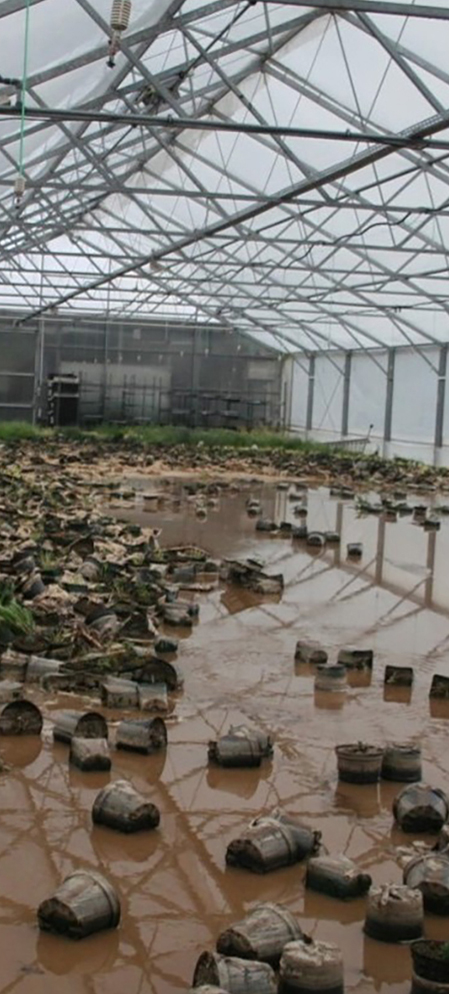An underestimated hazard: How to protect your facilities from flooding
Safety precautions for your horticultural business
Due to climate change, the risk of flooding has increased in recent years. And it is expected to pose an increasing threat in the coming years. Heavy rainfall, overloaded rivers and rising sea levels are leading to more and more extreme flooding events. Even regions that were previously hardly affected are increasingly at risk.
Effective action to reduce the risks from flooding
The most important step in preventing flood damage is to identify and minimize potential hazards. With a comprehensive risk assessment and the support of our experts, you can effectively reduce the risk of damage caused by flooding.
Find out below how you can protect your business from flooding.

Quick flood risk assessment and protective measures
First of all, you should check the flood risk of the property. Many countries offer online flood hazard maps for this purpose, which are provided by authorities or environmental protection organizations. If you have reason to suspect an increased risk, you can also contact local authorities such as the land registry or the water authority to obtain specific information. If the business is located in an area at risk of flooding, it is also advisable to use the free “NINA” warning app from the German Federal Office of Civil Protection and Disaster Assistance (“Bundesamt für Bevölkerungsschutz und Katastrophenhilfe” – BBK), which also provides flood warnings.
Recommendations for production facilities and flood warnings
In the event of a flood warning, production facilities should do the following: Flood the heating system expansion tank, fill and prime the heating tanks, and remove burners and heating pumps. Switch off the electricity and remove the fuse boxes. Electronic devices such as air conditioning computers and electrical machines should be removed or stored in a raised position. Open the doors of cold stores to prevent buoyancy damage. Empty fertilizer tanks should be flooded and plants and hazardous substances should be moved to safe storage.

Other possible risks and causes of flooding.
According to our experts, there are also other factors that play a role.
Total loss of production
Plants and crops may be completely destroyed.
Damage
to buildings
Structural damage and water ingress may render the building unusable.
Soil contamination
Leaked chemicals such as protective agents can have a long-term harmful effect on the soil.
Damage
to machinery
Water may irreparably damage expensive electrical machines and appliances.


